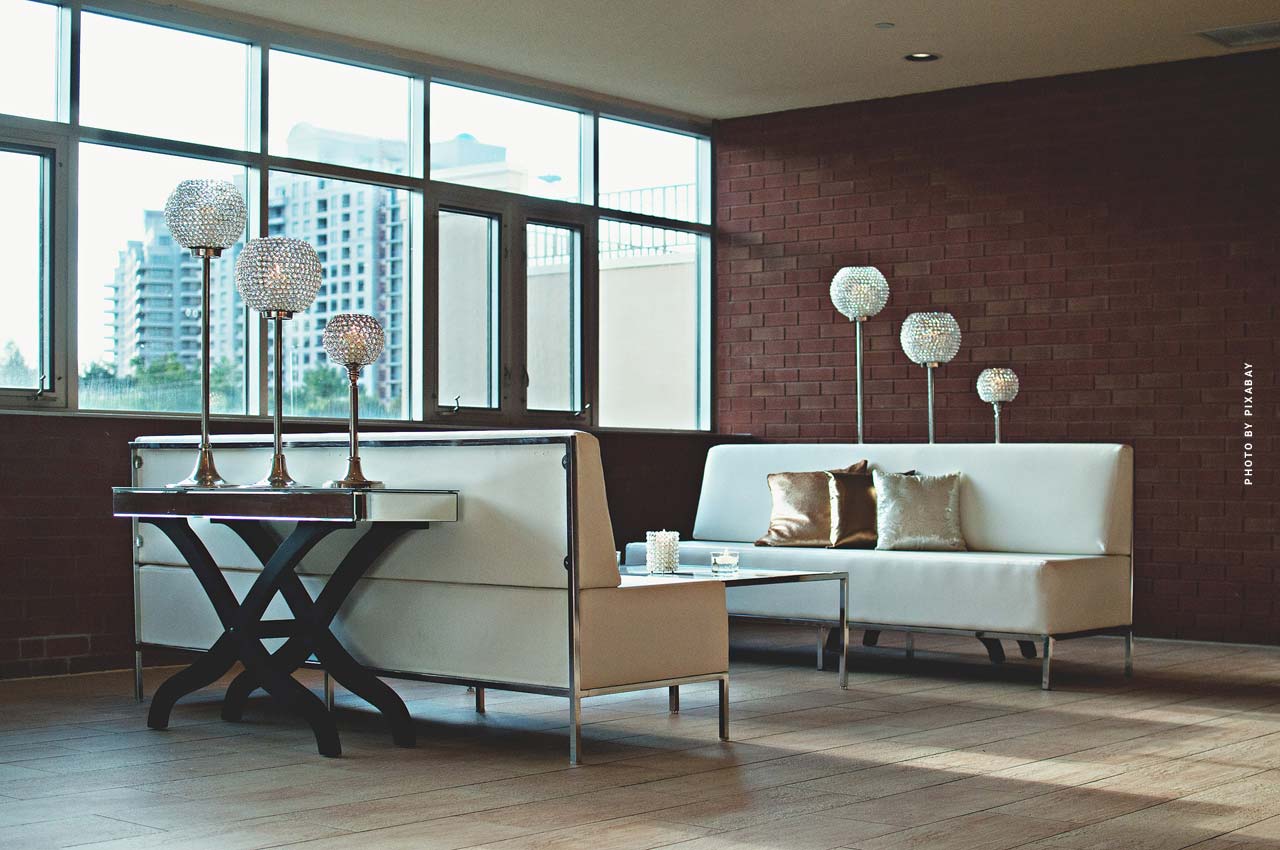How to wallpaper correctly – patterns, colors and the technique
Whether in life or simply in real estate. At some point, everyone really needs a change of scenery. And how does such a thing better than with the change of the walls. This goes of course best with new wallpapers. The selection is simply endless whether in hardware stores or the Internet. From colorful flowered to striped or simply in normal colors. For everyone there is something to influence a small change in life.
Wallpapering step by step – accessories, wallpaper rolls & instructions
If you decide to redecorate your four walls, you first have to ask yourself a few questions. Which wallpaper do you want? Which colors best suit your new room? And how exactly does wallpapering work? We get to the bottom of all these questions and explain everything about wallpaper. So that your new home will be just as beautiful as you dream. Tips on painting can be found here: ’11 tips for painting’.
Wallpaper rolls – How many do you need for your room?
First of all the question arises, how many wallpaper rolls do you need at all? The wallpapers usually have a standard size of 53cm width and 10.05cm length. So it is not yet necessary to know which wallpaper you want when calculating the amount of wallpaper. To calculate the amount now, there is a very simple formula that can be applied to any room.
[( room width x 2 ) + ( room length x 2 )] x room height = wall area
If you have calculated this formula, you know how large your wall surface is. A roll of wallpaper with the above standard dimensions, is enough for about five square meters of wall space. So now calculate the amount of rolls needed for their wall area with the formula:
wall surface/5 = number of wallpaper rolls required
So if you have a room that is 3m x 4m x 2.5m, you have a wall area of about 35 square meters and thus you need seven rolls of wallpaper. Generally, however, it is better to have one roll too much than too little, since you can badly include offcuts and other errors. With patterned wallpaper you should plan even more, because the pattern must fit together and they have thus possibly even more waste.
Checklist wallpaper accessories – what you need when wallpapering
In order to have all the necessary tools at hand when wallpapering, you should prepare well for your remodeling. When wallpapering, you should have the following things at hand:
- Spray bottle – Here should be filled with water or wallpaper remover, with which you can moisten the wallpaper.
- Nail roller – You can use this to cut into the old wallpaper so that it can soak in better.
- Spatula – The spatula is the most effective tool to successfully remove the old wallpaper.
- Wallpaper table – On this the wallpaper strips are coated with paste. You should not do without it, because it facilitates a lot of work for you and you can work on it more cleanly
- Painter brush – With this brush you distribute the paste later on the wallpaper strips
- Carpet knife – a useful tool with which you can later cut around sockets, for example.
- Bucket – In the bucket you can fill the wallpaper paste
- Wallpaper brush – This will help them to fix the wallpaper to the wall eventually.
Wallpapering for beginners – how to successfully put the wallpaper on the wall
How exactly does wallpapering actually work now and what should you absolutely pay attention to? Especially for beginners, wallpapering on your own is often more difficult than expected. So that nothing can go wrong with them and you are prepared for everything, we show you step by step how it works.
-
Measuring and cutting wallpaper
First of all, you should measure the height of the wall. Add 5-10 cm to this number to include the waste on the ceiling and floor. Mark the measured number with an adhesive strip on the wallpaper table to be able to cut the strips quickly and effectively. Bend the wallpaper on the marking edge to edge and then cut it with a wallpaper knife or scissors.
-
Paste wallpaper correctly
The paste for their wallpaper you should have set early enough. Now this is applied to the back of the wallpaper. Make sure to distribute it richly, evenly and from the middle to the outside. Especially important is the edge, which needs enough paste so that the joint sticks properly and is not visible. The processing instructions on the package insert will give you more information. The sheets are now folded together to form the soft joint. It is important that the edges lie exactly on top of each other and do not dry out. Please note that you should only soak as many sheets as you can actually process in the soaking time. This is usually 10-15 minutes, but can be found on the instruction leaflet.
-
Paste wallpaper on the wall
After the soaking time, take the wallpaper strip and apply it with approx. 3cm overhang to the ceiling on the application line or the wallpaper edge of the last wallpaper. If the wallpaper lies correctly, brush the wallpaper from top to bottom and from the middle to the sides until it is smooth. If bubbles appear or the wallpaper edge deviates from the plumb line, remove the wallpaper and realign it. Lastly, press the edges well again with the wallpaper brush and remove any paste that oozes out immediately! Wallpapers are simply glued over the corner and start again at the plumb line on the new wall.
-
Trim ceilings and floor
There are various ways to get a clean finish. The two most effective are to tear off the wallpaper overhang against a sharp edge, for example, a wallpaper ruler. Make sure to tear slowly, otherwise unsightly edges will appear. The other option is to attach a ruler to the edge and cut cleanly with a cutter knife along. This variant is more suitable for beginners, because it is easier to perform.
https://www.instagram.com/p/BeV-8Nyjj-k/?tagged=tapeten
Wallpaper models – woodchip, silk or still fleece
You wouldn’t think it, but when it comes to wallpaper, there is a wide range of different models. The best known is probably the woodchip wallpaper, as it is the absolute classic. However, there are also other models, such as pattern wallpaper. They are printed with different patterns and very popular, because they give the room a special flair.
Another great model is the paper wallpaper. It is made of recycled paper and has a multi-printed surface. It is available in various colors and also in great patterns you can find. When attaching, one should absolutely pay attention to the correct soft time and not fall below the recommendation of the manufacturer. After attaching you should avoid drafts and dry heating air, as this can damage the freshly applied wallpaper. Very similar to the paper wallpaper, is the non-woven wallpaper. Visually, they are hardly distinguishable, but the material is very different. Non-woven wallpapers consist namely of textile and cellulose fibers and are often enriched with synthetic binding agents and polyester fibers. It is in the comparison to the paper wallpaper relatively hard-wearing, stable and hardly inflammable. They exist both as smooth but also as structured version. A further model are the structure wallpapers. Under this name all models are summarized which possess a surface structure. This also includes the paper and non-woven wallpaper.
The classic among the wallpapers is and remains the woodchip wallpaper. And this also has its reason. The woodchip wallpaper consists of waste paper, wood chips and pulp, as this mixture creates the classic woodchip look. It is so often found in homes because it is so easy to paint over. Its texture and material absorbs the paint well and makes it look dynamic.
The last wallpaper model is a very special one. The silk wallpaper is probably the noblest but also most sensitive wallpaper and definitely not suitable for beginners. It consists mainly of pulp, but is supplemented by silk fabric and silk threads on the surface. This combination makes the surface very sensitive and especially against paste. If only one drop falls on the sensitive surface, you will never get the stain away again. So if you are not a professional in the matter of wallpapering and do not want to get help in the form of a painter, you should rather keep your hands off this model.





